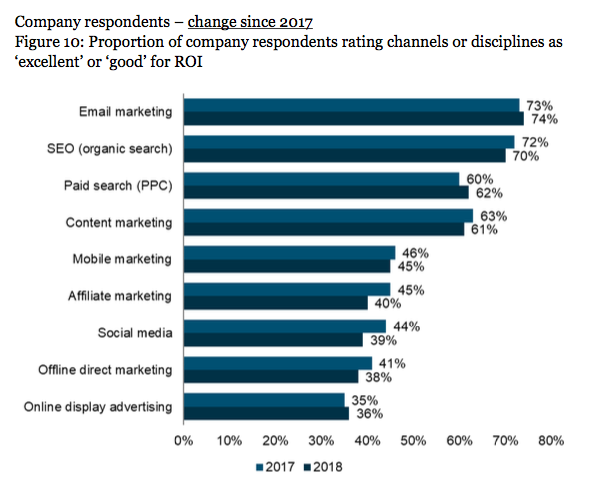Email Marketing in a Post-GDPR World


Whilst the rush to meet the data compliance deadline set by the General Data Protection Regulation may be over, the impact of GDPR on the marketing world is only just starting to reveal itself.Although brands may feel that they've completed their due diligence in meeting The GDPR's compliance measures for data processing and marketing consent, there is a bigger picture to be considered when approaching email marketing in a post-GDPR world.
In this blog, we look at the key considerations for modern email marketers in embracing the changing attitudes towards data privacy and email marketing campaigns.
Brave new world of email marketing
Whatever you feel about the pros and cons of The GDPR, there's undoubtably been a power shift from brands to consumers, in terms of marketing consent and personal data control. Even Facebook has since gone to great efforts and put out wide-reaching advertising campaigns to show that it's listening to the people and facing their concerns head on.
Email marketers must work harder in this new world of transparency, data privacy rules and positive marketing consent, and that starts at the acquisition stage. So, how can brands convince website visitors, prospects and social media followers to sign up to email marketing?
Quality not quantity
Acquiring email subscribers is key to converting customers and driving revenue for your business. The bigger your email list, the bigger the potential revenue, right? Yes and no. GDPR has helped focus marketers on the concept of quality over quantity.
Repermissioning began the process of creating a more streamlined and valuable subscriber lists. Yes, your database may have taken a hit during email repermissioning campaigns, but subscribers who opted-in have reinforced their interest in receiving email from you. And those who unsubscribed were no longer interested in receiving your emails. So, why have them sitting inactive or checked out in your database anyway?
The quality of your email database is important. GDPR has encouraged brands to cleanse their subscriber lists and marketing processes.
Growing your email list post-GDPR
That being said, a smaller pool of subscribers limits the number of sales you can achieve through email campaigns, so you still need to refresh your email list growth strategy.
Even before The GDPR, the average email subscriber list decays by around 22% every year (Source: Email Marketing Reactivation Guide for Retailers). So, it's crucial to have an effective acquisition strategy for email to avoid a dwindling database.
Email marketing has long been heralded for its high ROI and that's largely down to email being an earned channel which enables direct interactions and due its effectiveness in building and nurturing customer relationships.
Econsultancy's 2018 Email Marketing Industry Census showed email marketing still leads the way versus other channels, in terms of ROI, but with SEO hot on its heels. It will be interesting to see the results of next year's report, once the impact of GDPR has been really felt.

Acquiring new email subscribers hasn't needed to be a costly process in the past, as there are lots of great ways to build your subscriber list organically. This still stands, but gaining marketing consent has just got more difficult. So, putting some budget behind acquisition campaigns may be inevitable.
Check out our recent blog about growing your email list: GDPR-Friendly Tactics for Growing Your Email Marketing List.
Encouraging good practice with email
When mentioning paid activity, we don't mean buying email addresses from third-parties. Those days should be long gone, and those tactics were largely underhand and self-defeating in the first place. Paid lists lead to bad addresses, deliverability issues, spamming flags and damage to brand reputation. It's a no-go.
ESPs have tightened up their controls over these kind of shady tactics, as it's not only damaging to those companies buying lists but also to other ESP clients too, due to shared IPs. Bought email addresses are also unlikely to bring you the contacts that will engage with your content anyway.
The bottom line is that this approach is bad practice, especially now, as everyone is (rightly) under the microscope with GDPR in effect. You should never add anyone to your subscriber list without knowledge of their consent.
Summary
In this post-GDPR marketing landscape, email marketers should focus on transparency, relevance and value. Beyond keeping your data processes and information about marketing consent clear and compliant, look to segment your database effectively to send more targeted and relevant emails. And any data capture forms you create for marketing email subscription should demonstrate a fair value exchange, outlining the key benefits your emails will offer subscribers. Always look to put your subscribers' needs first.
Suggested Reading From The Blog
Most Popular Blogs
20 Great Birthday Email Marketing Examples
5 Minute Read
20 Horrifyingly Good Halloween Email Creative Examples
4 Minute Read
Top 10 Email Marketing Platforms for 2024
6 Minute Read
Editor's Picks
Top 10 CDPs for Email Marketing in 2024
4 Minute Read
Top 10 Email Marketing Platforms for 2024
6 Minute Read
20 Black Friday Countdown Email Marketing Examples
4 Minute Read
